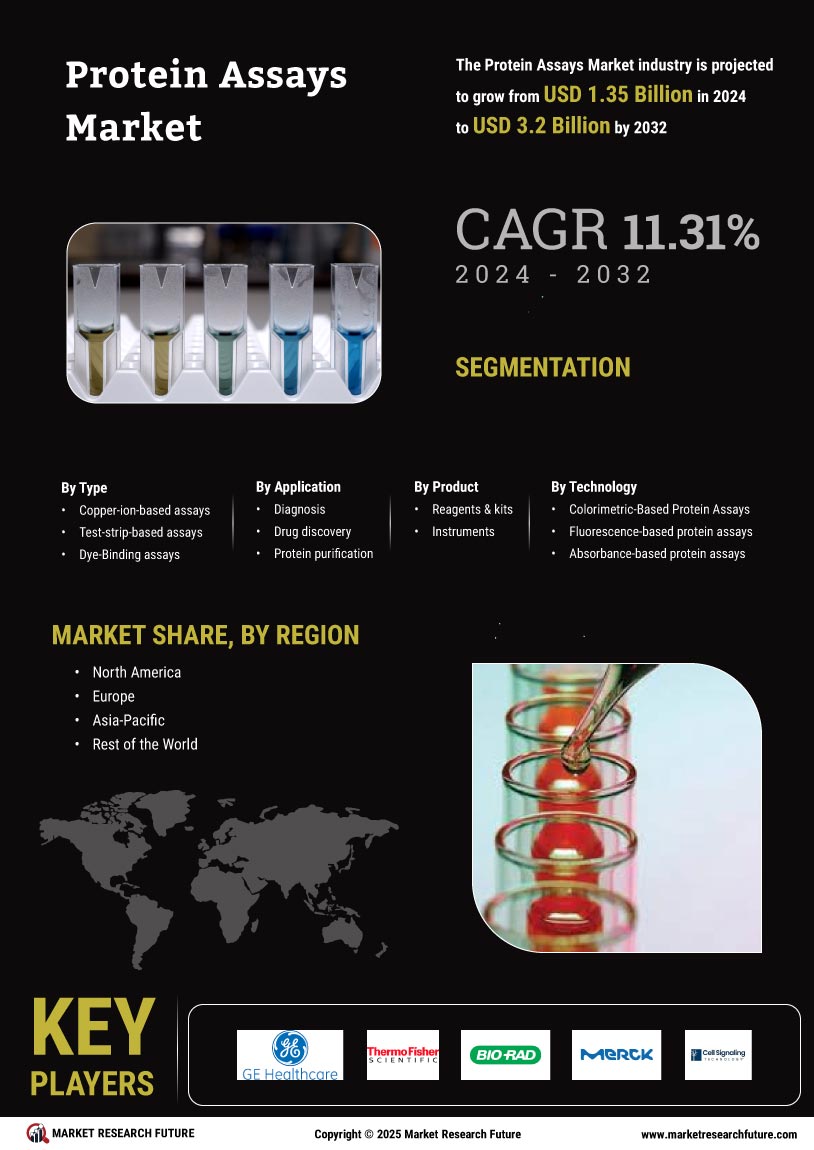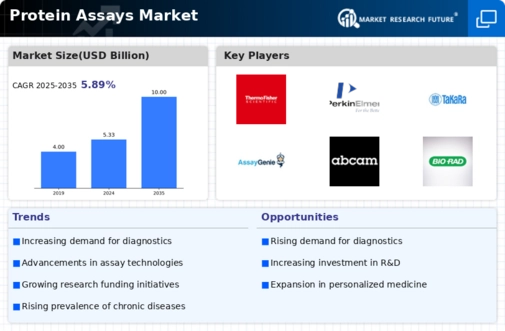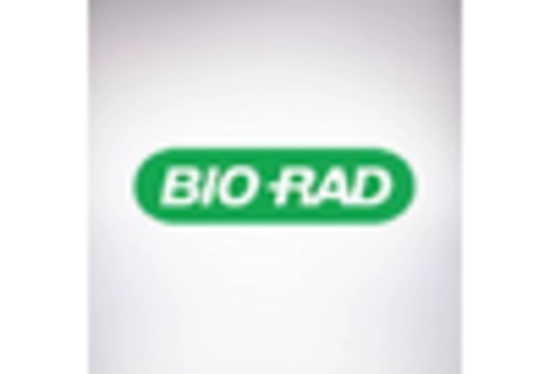Expansion of Biopharmaceutical Sector
The Protein Assays Market is poised for growth due to the expansion of the biopharmaceutical sector. With the increasing number of biopharmaceutical products entering the market, there is a heightened demand for protein assays to ensure the quality and efficacy of these products. In 2025, the biopharmaceutical market is projected to exceed 400 billion USD, creating a substantial opportunity for protein assay manufacturers. The need for rigorous testing and validation of biopharmaceuticals necessitates the use of advanced protein assays, which are essential for characterizing proteins and monitoring their stability. This trend indicates a promising future for the Protein Assays Market as it aligns with the growth trajectory of the biopharmaceutical sector.
Growing Prevalence of Chronic Diseases
The Protein Assays Market is significantly influenced by the increasing prevalence of chronic diseases such as cancer, diabetes, and cardiovascular disorders. These conditions necessitate the development of advanced diagnostic tools, including protein assays, to facilitate early detection and monitoring. As of 2025, it is estimated that chronic diseases account for nearly 70% of all deaths worldwide, underscoring the urgent need for effective diagnostic solutions. Consequently, healthcare providers are increasingly adopting protein assays to improve patient outcomes. This trend is likely to propel the Protein Assays Market forward, as the demand for accurate and efficient assays continues to grow in response to the rising burden of chronic diseases.
Increased Focus on Personalized Medicine
The Protein Assays Market is witnessing a shift towards personalized medicine, which emphasizes tailored treatment approaches based on individual patient profiles. This trend is fostering the development of specific protein assays that can identify biomarkers associated with various diseases. As personalized medicine gains traction, the demand for protein assays that can provide insights into patient-specific responses to therapies is likely to increase. By 2025, the personalized medicine market is projected to surpass 2 trillion USD, highlighting the potential for growth within the Protein Assays Market. This focus on individualized treatment strategies is expected to drive innovation and enhance the relevance of protein assays in clinical settings.
Rising Research and Development Activities
The Protein Assays Market is experiencing a surge in research and development activities, driven by the increasing need for innovative diagnostic tools and therapeutic solutions. As pharmaceutical and biotechnology companies invest heavily in R&D, the demand for protein assays is expected to rise. In 2025, the market is projected to reach a valuation of approximately 5 billion USD, reflecting a compound annual growth rate of around 7%. This growth is largely attributed to the need for precise and reliable assays in drug discovery and development processes. Furthermore, academic institutions are also contributing to this trend by conducting extensive research on protein interactions and functions, thereby enhancing the overall landscape of the Protein Assays Market.
Technological Innovations in Assay Development
Technological innovations are playing a pivotal role in shaping the Protein Assays Market. The advent of high-throughput screening technologies and microfluidics has revolutionized the way protein assays are developed and utilized. These advancements enable researchers to conduct assays more efficiently and with greater accuracy, thereby enhancing the overall productivity of laboratories. As of 2025, it is anticipated that the market for high-throughput screening technologies will reach approximately 3 billion USD, further driving the demand for protein assays. The integration of artificial intelligence and machine learning in assay development is also expected to streamline processes and improve data analysis, indicating a transformative phase for the Protein Assays Market.

















Leave a Comment